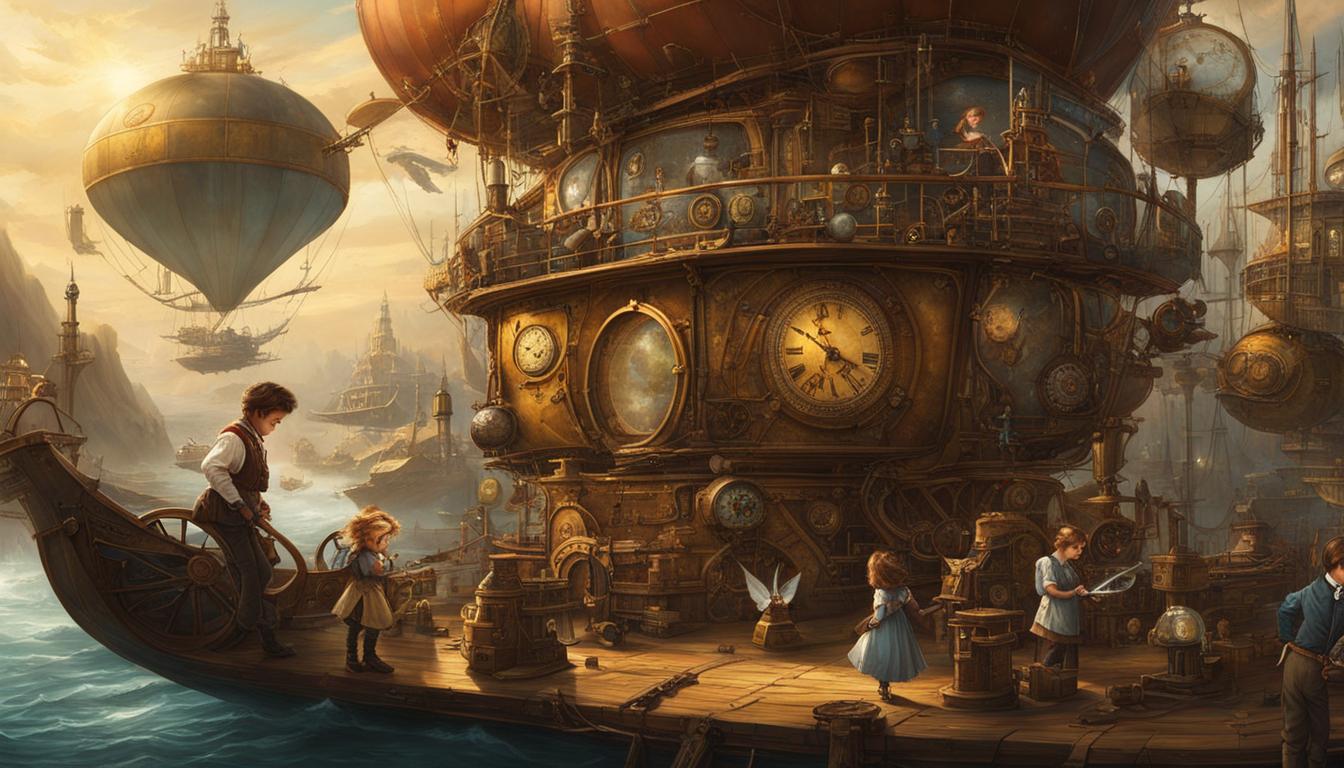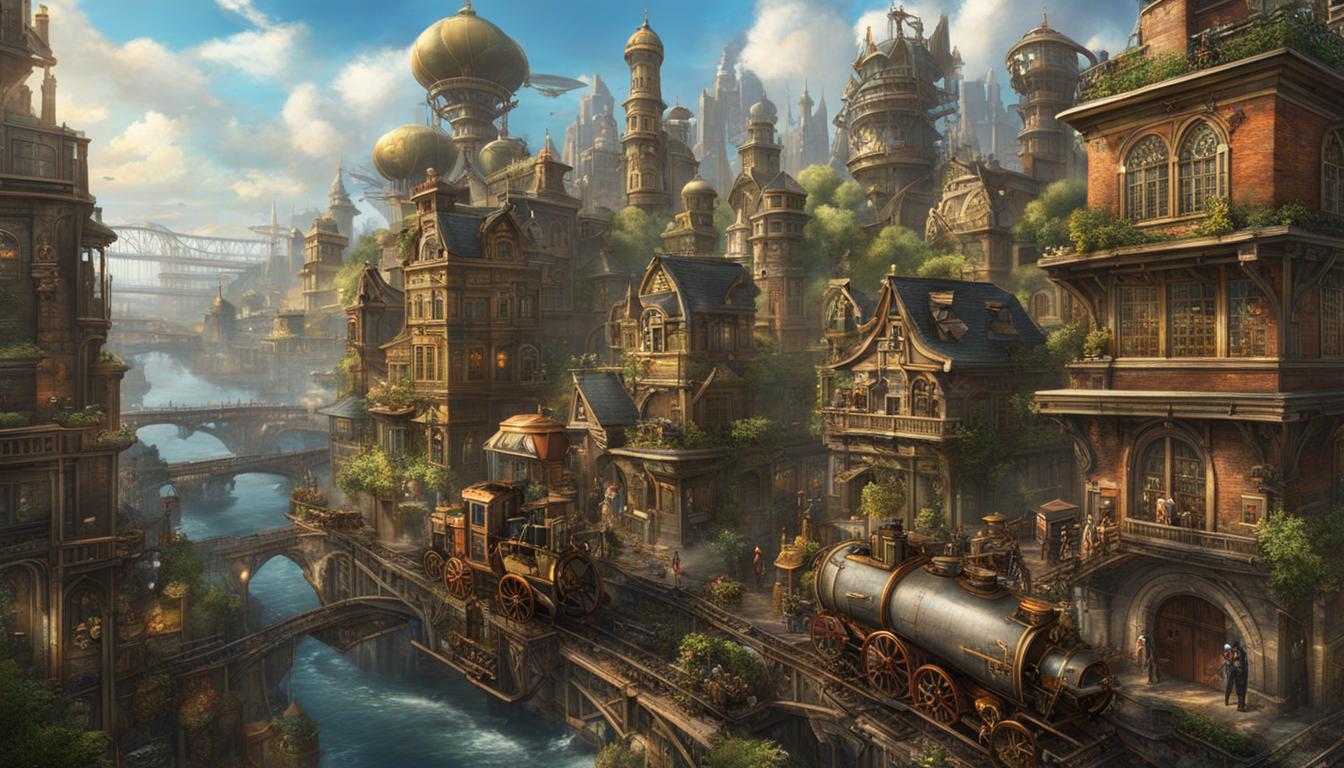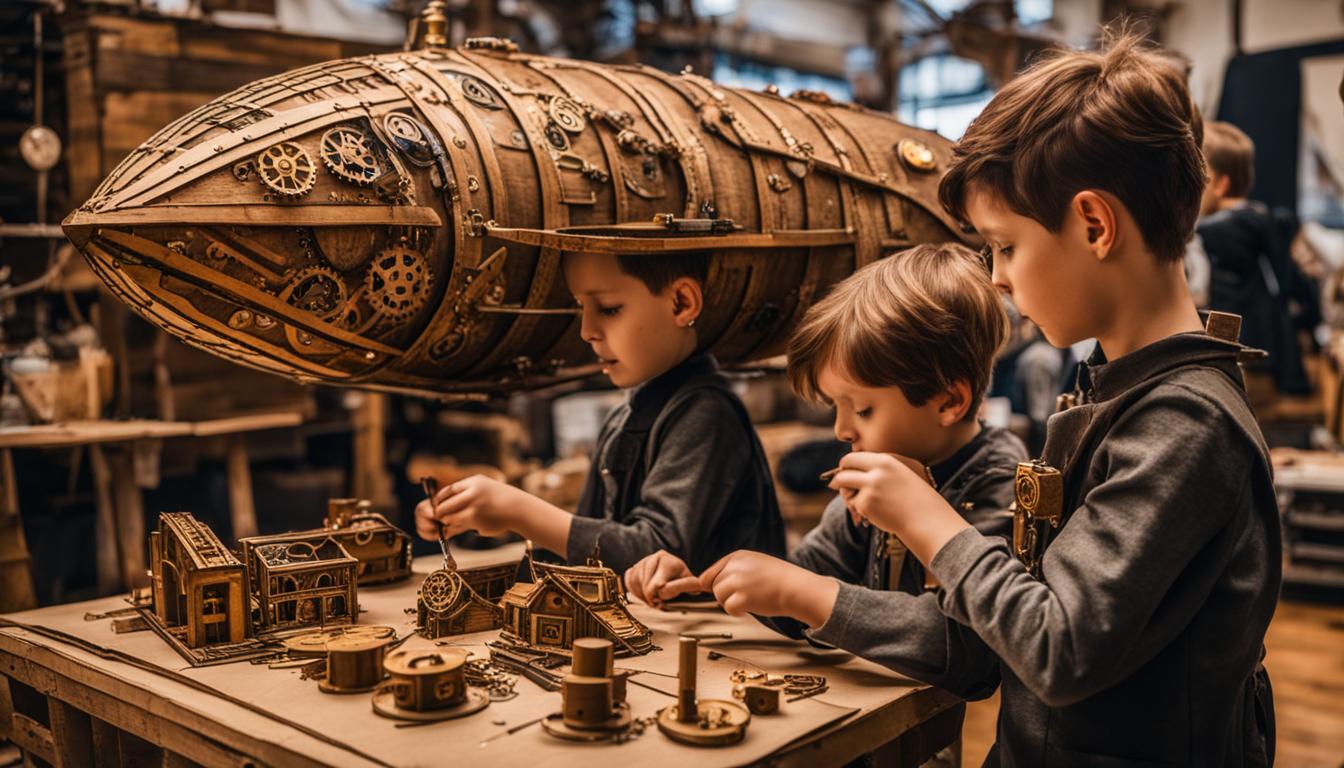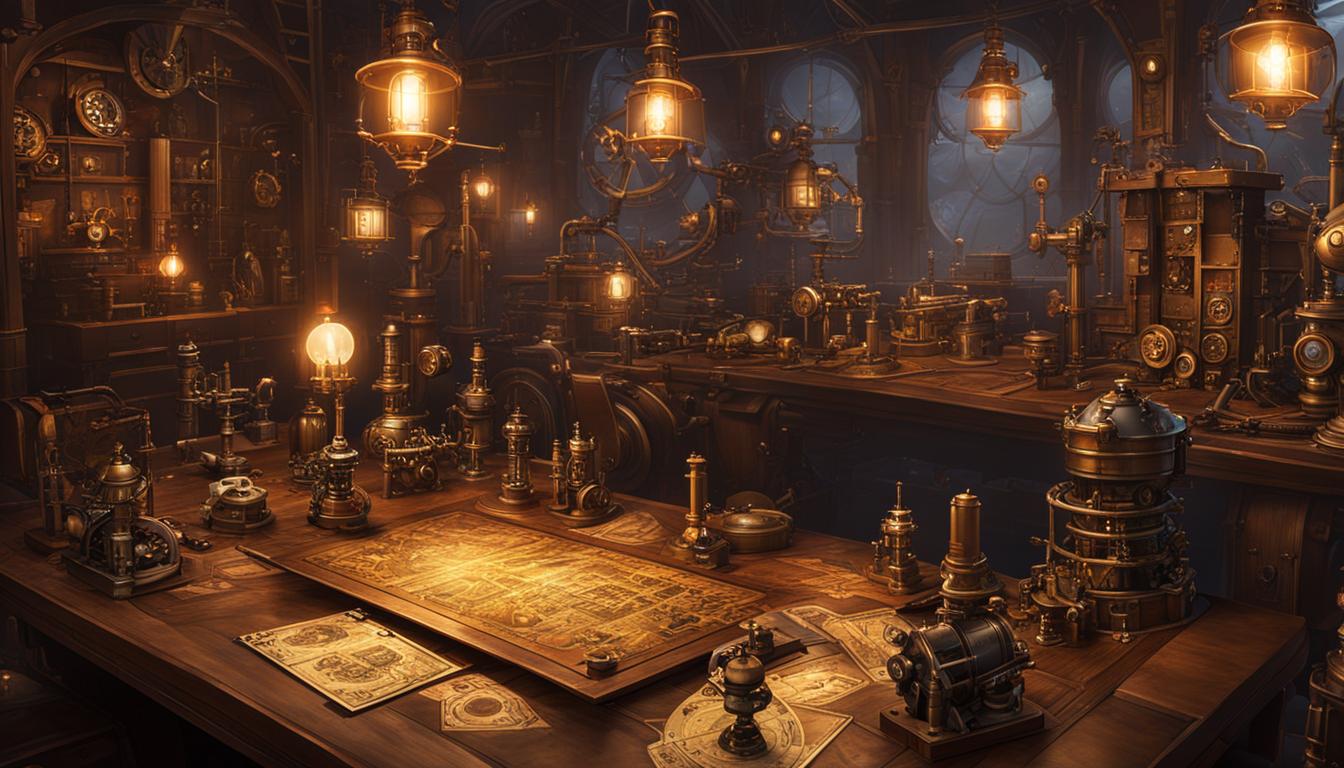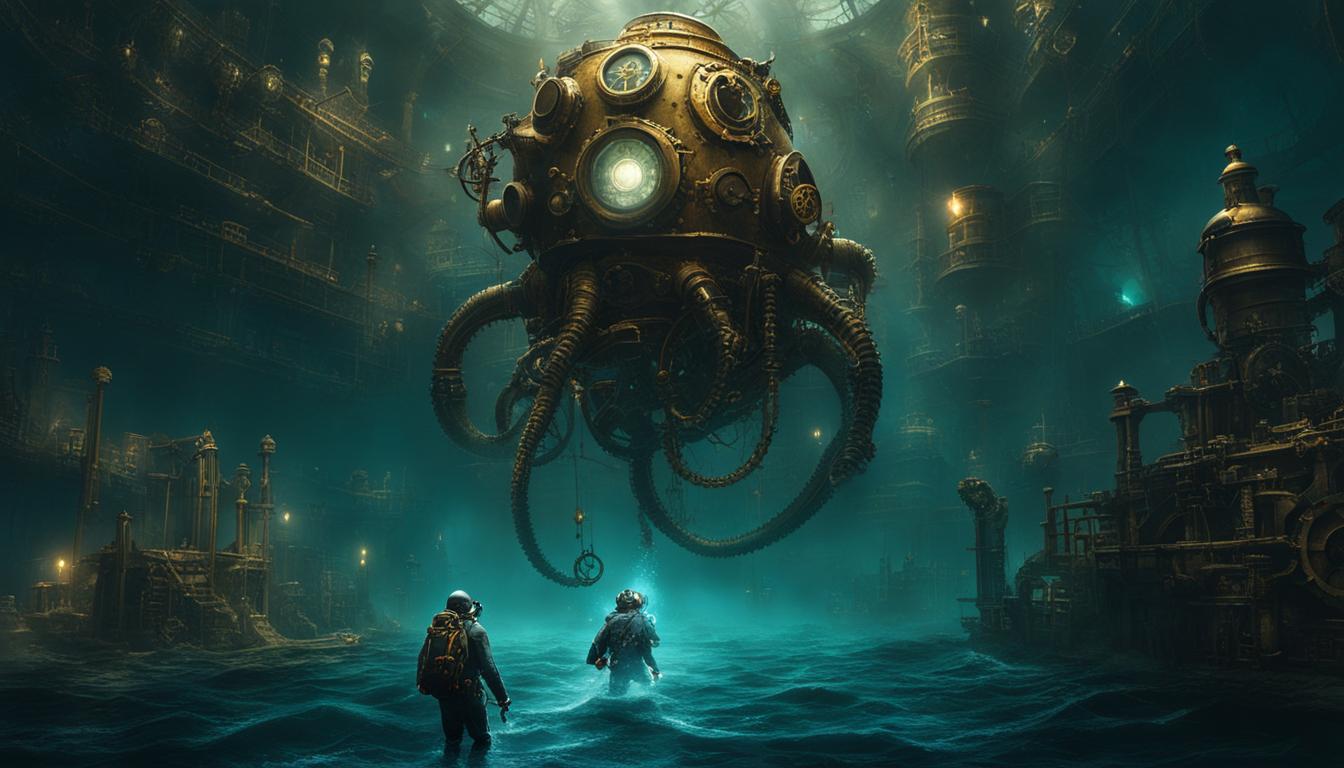Steampunk, with its fusion of Victorian aesthetics and retrofuturistic allure, has captured the hearts and imaginations of young people across the globe. Its unique blend of steam power, clockwork inventions, and antique charm offers a nostalgic and creative escape from the modern world.
In order to foster youth interest in steampunk and engage the younger generation, promoting this captivating subculture among young people is essential. By inspiring younger audiences with steampunk’s visually striking aesthetic and cultivating their enthusiasm, we can attract and nurture a vibrant young steampunk community.
Through literature, fashion, art, and events, steampunk not only offers an opportunity for imaginative expression but also develops problem-solving skills and resilience in young individuals. It ignites their creativity and encourages them to think outside the box, making them active participants in the enigmatic world of steampunk.
Key Takeaways:
- Fostering youth interest in steampunk is crucial for the longevity of the movement.
- Engaging the younger generation with steampunk can inspire creativity and problem-solving skills.
- Promoting steampunk among young people nurtures a sense of community and fosters self-expression.
- Attracting young people to steampunk culture involves showcasing the visually striking aesthetic and captivating nature of the subculture.
- Nurturing young steampunk fans can lead to the growth of a vibrant young steampunk community.
The Origins and Influence of Steampunk
Steampunk, a genre that combines Victorian aesthetics with retrofuturism, has its origins rooted in speculative fiction of the late 19th century. Coined in 1987 by author K.W. Jeter, steampunk imagines a world where steam, not electricity, drives technological advancements. Influenced by literary giants such as H.G. Wells and Jules Verne, steampunk offers a unique blend of history, technology, and an imaginative aesthetic that captures the attention of young readers and creative minds.
The works of authors like H.G. Wells and Jules Verne have played a significant role in shaping the steampunk movement. Their books, such as “The Time Machine” and “Twenty Thousand Leagues Under the Sea,” introduced readers to a world where science and invention were intertwined with the elegance of the Victorian era. These authors set the stage for the exploration of imaginary technologies and the blending of past and future, creating the foundation for what would become known as steampunk.
“Steampunk is a subculture that embraces an aesthetic expression fueled by Victorian era influence and the speculative fiction of the time.” – Steampunk Enthusiast
Steampunk’s influence extends beyond literature and into various forms of art, fashion, and entertainment. From intricate clockwork designs to elaborate costumes and accessories, steampunk enthusiasts embrace the Neo-Victorian style and infuse it with their own punk influences. The genre’s aesthetic expression captures the imagination of young people, providing a gateway to explore history, science, and creative expression in a visually stunning way.
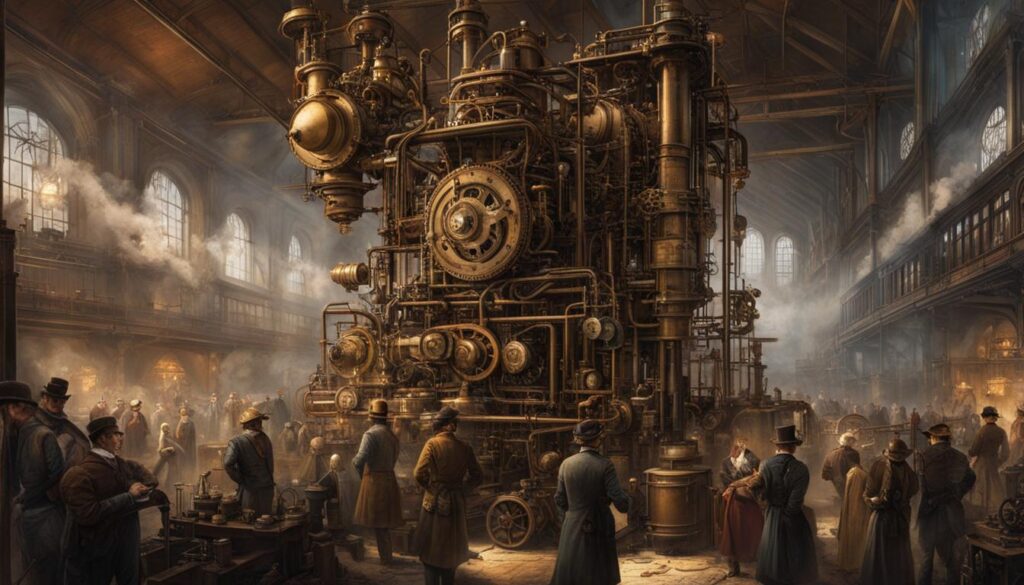
| Key Influential Authors | Representative Works |
|---|---|
| H.G. Wells | “The Time Machine”, “The War of the Worlds” |
| Jules Verne | “Twenty Thousand Leagues Under the Sea”, “Journey to the Center of the Earth” |
Steampunk Fashion and Culture
Steampunk fashion has revolutionized into a culture of imaginative dressing, fusing Victorian-inspired fashion with elements of punk, contemporary street fashion, burlesque, and goth styles. It is a style that embraces the past while incorporating a modern sensibility, making it a unique form of self-expression for young people. With its distinctive aesthetic and DIY attitude, steampunk fashion offers a creative outlet for individuals to create beautiful and functional objects that blend art, fashion, architecture, and mechanics.
Inspired by characters from the 19th century such as explorers, soldiers, lords, countesses, and harlots, steampunk fashion invites individuals to explore their own unique style while paying homage to the past. The movement encourages young people to experiment with clothing and accessories, combining intricate details, lace, corsets, goggles, gears, and top hats to create visually striking ensembles. Steampunk fashion events, such as the annual benefactor dinner hosted by Krewe du Cork, provide young people with a platform to showcase their creativity and immerse themselves in the steampunk culture.
“Steampunk fashion allows me to express my creativity and individuality in a way that no other style does. It’s like stepping into a different era and creating a character for myself. I love the freedom of combining elements from different time periods and making it my own.” – Emily, a young steampunk enthusiast.
The Neo-Victorian Influence
The Neo-Victorian style is a significant influence in steampunk fashion, characterized by the revival of Victorian-era aesthetics in contemporary fashion. It embodies an appreciation for the opulence, elegance, and attention to detail that defined Victorian fashion. Young people are drawn to the elaborate costumes, intricate patterns, and luxurious fabrics commonly associated with this style. It allows them to step into the shoes of an aristocrat from a bygone era, evoking a sense of timelessness and enchantment.
| Victorian-Inspired Elements | Punk Influences |
|---|---|
| Corsets | Leather jackets |
| Top hats | Studded accessories |
| Petticoats | Ripped stockings |
| Cravats | Spike embellishments |
Steampunk fashion encourages young people to view clothing as a form of self-expression, enabling them to create unique personas and explore their own imaginative narratives. It fosters a sense of community and camaraderie among like-minded individuals who share a passion for the aesthetic and cultural elements of steampunk. By embracing the DIY attitude and blending historical influences with contemporary styles, steampunk fashion continues to captivate and inspire young people, ensuring its enduring popularity in the years to come.
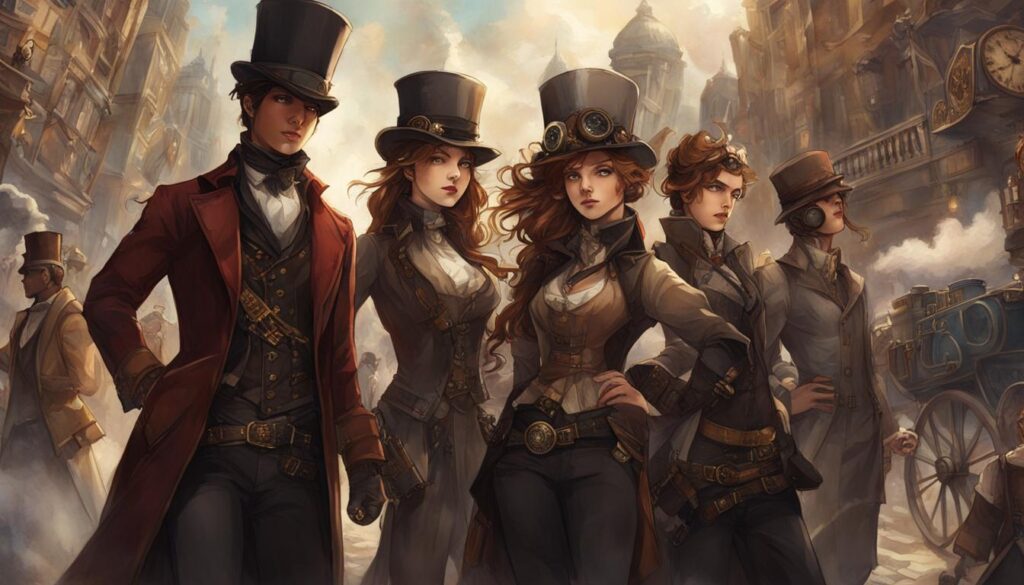
Conclusion
Building a young steampunk community and inspiring the next generation is at the heart of fostering steampunk love in youth. The steampunk movement offers young people a unique and imaginative outlet to explore history, technology, and fashion, encouraging creativity and resilience.
Through events, literature, fashion, and art, young people have the opportunity to engage with the steampunk culture and express their own distinctive style. The movement’s DIY attitude and emphasis on problem-solving nurture the creative spirit within young people, empowering them to think outside the box and embrace their individuality.
As the popularity of steampunk grows, it becomes increasingly important to continue fostering youth interest and involvement in the movement. By doing so, we ensure the longevity of steampunk and inspire future generations to embrace the enigmatic world it offers. Let us come together to build a vibrant and supportive young steampunk community, where imagination knows no bounds and youthful voices are celebrated.
FAQ
What is steampunk?
Steampunk is a cultural movement that combines Victorian era aesthetics with Jules Verne-inspired retrofuturism. It focuses on steam power, gears, clockwork inventions, and a fusion of modern and antique styles.
When was the term “steampunk” coined?
The term “steampunk” was coined in 1987 by author K.W. Jeter to describe a genre of speculative fiction that imagines a world where steam, not electricity, drives technological advancements.
What is the influence of steampunk?
Steampunk draws inspiration from influential authors such as H.G. Wells and Jules Verne. It has been influential in the works of contemporary authors and artists, who have created vivid and imaginative worlds that bring steampunk daydreams to life.
What is steampunk fashion?
Steampunk fashion combines Victorian-inspired fashion with elements of punk, contemporary street fashion, burlesque, and goth styles. It channels characters from the 19th century while incorporating a modern sensibility.
What is the DIY attitude in steampunk?
Steampunk encourages a DIY attitude, where individuals create beautiful and functional objects and designs that blend art, fashion, architecture, and mechanics.
How does steampunk foster community?
Steampunk events provide opportunities for young people to showcase their creativity and immerse themselves in the steampunk culture. The movement fosters a sense of community and encourages self-expression through unique steampunk style.

